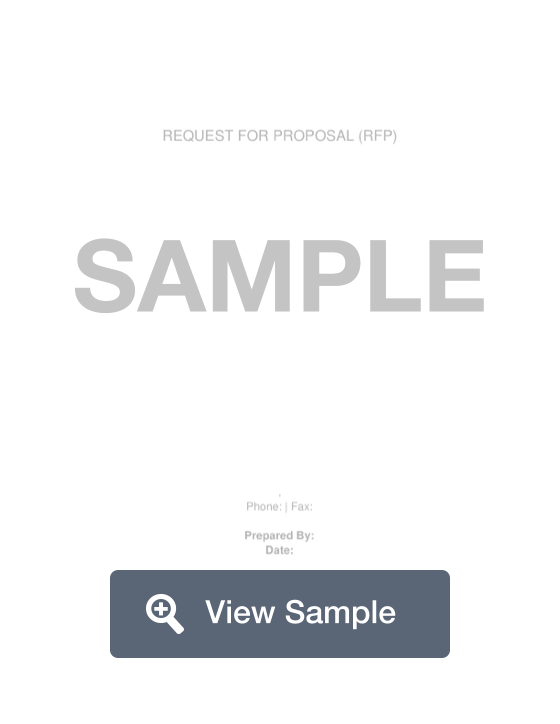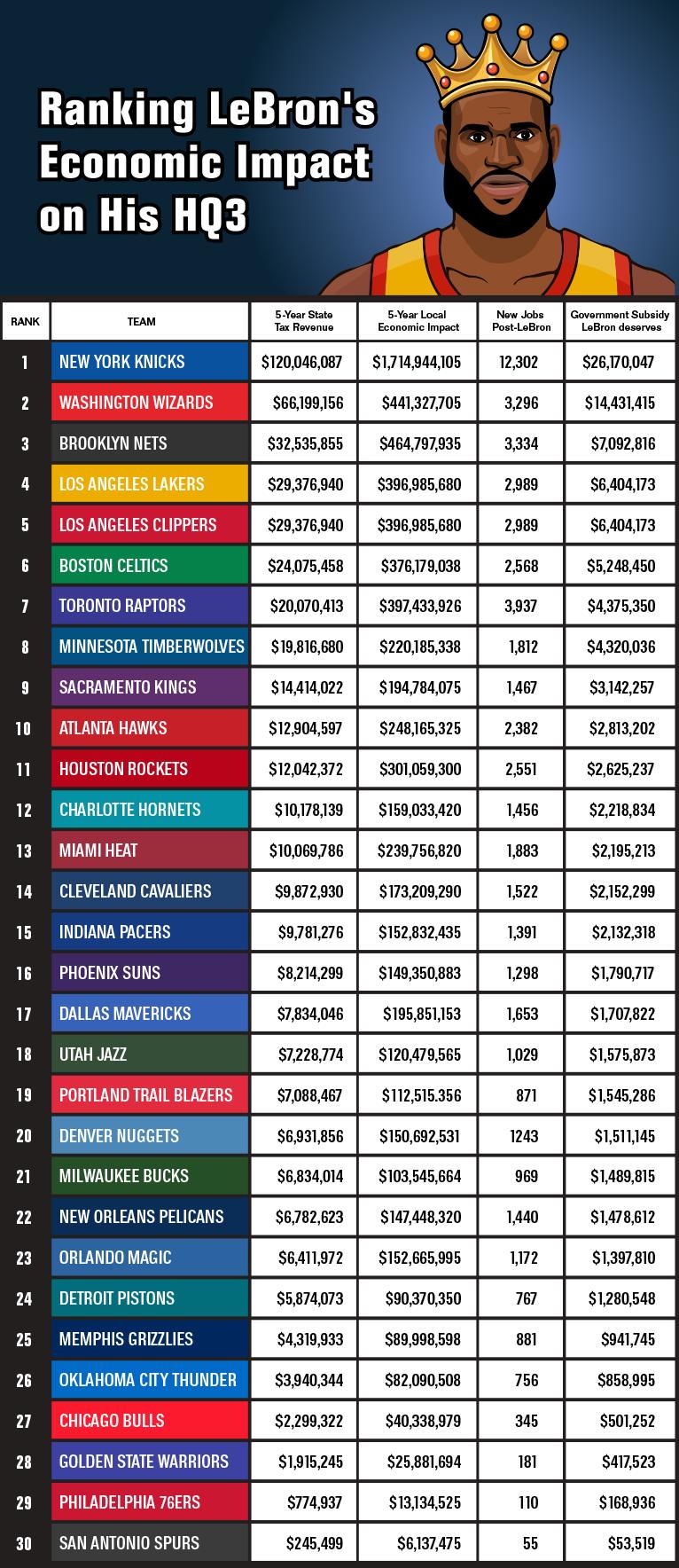What is a Request for Proposal Template (RFP)?
A request for proposal is used to submit a solicitation in the form of a bid for some type of commodity, service, asset, or property. It is typically used to get information about the proposed asset or service. This can include a history of the asset's ownership, financial information, information about the seller, or the product's availability.
A company may use a request for proposal to ask for services such as upgrading technological equipment, construction, or other services. This can ensure a business gets the best service providers and companies for the job. It also allows them to compare prices so they get an appropriate price for the assets or services.
To receive the best quality responses to your request for proposal, it is important to send a high quality request for proposal template. Your RFP document represents your company. When potential bidders view your request for proposal, they are deciding whether they will provide a response. The best RFPs lead to the best proposals and right candidates, which lead to successful projects.
Components of a request for proposal template
A RFP template is a type of bidding request where an organization publicly announces that it would like a specific project completed. The RFP invites companies who can perform the work to place bids for the work. The contract award goes to the proposal the provides the best value. This process is typically used for more complex projects.
The RFP highlights all of the relevant terms and conditions of the contract and the bidding process. It provides detailed information about what the bid should include and how it should be presented.
The RFP will normally include:
-
Project Name
-
Project overview
-
Background section - of company and business
-
Problem that needs to be solved/project goals
-
Principal point of contact
-
Budget
-
Evaluation criteria that will be used to select the winner
-
Description of the tasks that must be completed by the winning bidder
-
Format and proposal timeline
How to write a request for proposal template
If you are writing a request for a proposal, it is a good idea to look at online samples to see what the final product should look like. You can work with an online template that will make the process of creating a RFP as simple as possible. To create a RFP template, you can also follow these steps:
-
Add the company name that is issuing the RFP
-
Add the company’s contact information
-
Include background information on company
-
Add the name of the person preparing the RFP
-
Add the identification number for the RFP
-
Indicate what services are being requested
-
Add name of project and address of project worksite
-
Specify goal of project
-
Indicate project scope and specifications
-
Provide list of project milestones/proposed project timeline
-
Specify timeline for RFP process - when is the RFP response due?
-
Indicate point of contact
-
Indicate whether bidders are required to respond with a letter of intent stating whether they will submit or decline to submit a proposal
-
Indicate whether a bidders’ meeting will be held for the RFP
-
Specify what bidders must submit with their proposal
-
Specify if bidders must provide references (past clients)
Sample RFP
An RFP is a request for a proposal -- a document that details what a business/organization requires from a vendor in order to complete a new project; it is the starting point in the procurement process for a business/organization eager to provide a new service or create a new product. The RFP can be written by one person or several team members, depending on the size of the business/organization. Contractors/agencies who believe they can meet the needs described in the RFP bid for the contract. Designing an RFP document that attracts responses increases the likelihood that a business will obtain the services it requires. A good - clear and professional - RFP will attract quality potential vendors and save a company time in completing a top-drawer project.
The purpose of the RFP document is to detail what the company needs from a potential vendor to fulfill the requirements of the project in question. Vendors/respondents will submit bids based on the requirements outlined in the RFP; the business and its stakeholders will evaluate the competing bids to form a short list of contenders or select the winning vendor outright.
A business'/organization's own RFP should include the following sections:
Top of Document:
-
Project Name + Description (if applicable)
-
Business/Organization Name
-
Address
-
City, State, Zip Code
-
Procurement Contact Person
-
Telephone Number of Procurement Contact Person
-
Email Address of Procurement Contact Person
-
Fax Number (if applicable)
Introduction: This section should include useful background information about the business/organization -- who founded it, the product or service it offers, what differentiates it from competitors, and where it is located.
Proposed Services & Deliverables: This section should include a detailed outline of the project the business/organization needs to complete and the expected goals to be achieved via the project; the required tasks and methodology for determining the winning vendor should be specified. This section describes what the vendor will be paid for and what they must deliver -- the criteria that will guide the chosen vendor.
Selection Schedule: This section should include a detailed schedule, so vendors will be able to determine if they can meet the business'/organization's deadlines, as well as a timeframe for vendors to submit questions regarding the project.
Time and Place for Submission of Proposals: This section should detail how and where vendors can submit their bids/proposals.
Timeline: This section should detail the time constraints of the project, the dates the stakeholders want to see action on the project. The timeline can include several phases, including setup, initiation, planning, and timeline to completion.
Elements of Proposal: This section should outline a checklist of what the business/organization expects vendors to include in their bid/proposal.
Selection Criteria: This section should detail the business'/organization's expectations -- a list of mandatory items that will define the best, most impressive vendors. The list will likely include examples of past work, a record of demonstrated success with similar businesses/organizations, the expertise and technical skills required, and a cost of services provided that falls within the business'/organization's budget.
Possible Roadblocks: This section should reference any obstacles, including limited resources, that might keep particular vendors from completing the project satisfactorily.
Budget: This section should let the vendor know how much the business/organization is able to pay them for their services. It might, in addition, include a request for an itemized cost estimate from the bidder that would also indicate when costs are to be paid.
There are other types of requests that may occur before or after the RFP process:
Request for Information (RFI): A request for information is useful for businesses/organizations that need some guidance/additional information before deciding to contract for outside services. An RFI is also known as an expression of interest (EOI). An RFI may indicate that the stakeholders are unsure about purchasing the external services in question and need more details or information before they can truly decide.
Request for Quote (RFQ): This request is for businesses/organizations that have all the information they need to proceed with hiring a vendor for a project except the cost/price.
Why do you need an RFP?
Requests for proposal are important documents to invite potential contractors to submit proposals that offer solutions to your company. An RFP informs and notifies potential contractors about the work that needs to be done in your company and encourages them to submit a proposal to meet those requirements. An RFP lets potential collaborators know what you need and provides them with information that will allow them to provide better proposals.
When you publicly publish a request for proposals, you increase your chances of receiving a large number of responses to your request. The RFP will help potential bidders better understand your requirements and respond with proposals that are tailored to fit your needs.
RFPs encourage competition between potential collaborators and is a good technique for ensuring that you receive the fairest price for the requested services.
Scope of Work vs. RFP
A scope of work (SOW) document is an agreement on the work to be performed on a project -- a map that guides the completion of the project. Therefore, a SOW is usually entered into after the RFP process has concluded, and a party has been chosen for the particular project. A SOW is a project scope statement used when working/collaborating with people outside a business/organization to avoid miscommunication, misinterpretations of expectations, presumptions, and/or disputes; a scope of work in project management is a project plan that details everything that will be completed for stakeholders. To be effective, a SOW must have explicit details, visualizations/examples, definitions of terminology, time for reviews and unexpected changes, and definitions of success.
LeBron HQ3 - The Economic Impact of the King on His Next Team's City
By Jackson Hille & Maya Wald
Updated June 26, 2021
To share this infographic with your readers, paste this URL into your article: https://formswift.com/request-for-proposal#study
About the Study
The NBA All-Star Game is on the horizon, and speculation about where LeBron James’ free agency might lead him is heating up. There’s plenty of talk about the impact his destination will have on LeBron, but there’s another aspect to the conversation—the impact LeBron will have on his destination.
A study released in May 2017, co-authored by Harvard Kennedy School Associate Professor Daniel Shoag and Stan Veuger of the American Enterprise Institute, documented the real-life economic impact of LeBron James.
“James has a statistically and economically significant positive effect on both the number of restaurants and other eating and drinking establishments near the stadium where he is based, and on aggregate employment at those establishments. Specifically, his presence increases the number of such establishments within one mile of the stadium by about 13%, and employment by about 23.5%” —Taking My Talents to South Beach (and Back)
This phenomenon got the FormSwift team to thinking about what city would gain the most economically from LeBron choosing its team. We conducted an analysis to determine:
-
The number of new jobs potentially created for LeBron’s chosen city
-
The local economic impact (including state tax revenue) over a five-year contract
-
What the city should offer LeBron in its bid to bring him to their team
We’re calling this study our LeBron HQ3 Sweepstakes, a play on the Amazon HQ2 furor, which had cities across the country (and even a few in Canada) submitting proposals to host Amazon’s next headquarters. Below is a description of our study's methodology.
Methodology
Starting with the economic forecasting model set out by Shoag and Veuger’s May 2017 paper, which concluded that LeBron increases the number of eating establishments within one mile of his home arena by 13% and the employment at those establishments by 23.5%, we set out to determine the number of restaurants within 1 mile of each NBA team’s arena.
To find the exact number of establishments within a mile of each arena, we utilized Yelp’s location algorithm, with the filter set to 1 mile of the exact arena address; each of these searches returned the exact number of eating establishments within the specified area. We then took the number of establishments and multiplied by .13 (representing the aforementioned 13% increase in eating establishments prompted by LeBron’s presence). This calculation gave us the number for the amount of new eating establishments each local area could expect to gain from LeBron choosing their city as his HQ3.
To quantify the number of new jobs gained via those new eating establishments, in addition to the previously noted increase in employment of 23.5% at existing eating establishments, we used the U.S. Department of Labor’s statistics on the average amount of employees per eating establishment. With this Labor Department number, we multiplied it first by the total of new eating establishments in the area post-LeBron; once we had that result, we took the existing amount of eating establishments in the area multiplied by the amount of employees per establishment multiplied by .23. Once we had these two totals, we added them together and had the total amount of new jobs the local area would gain due to LeBron’s arrival.
For local economic impact, we utilized the mean annual wage data for restaurant workers of each metro area encompassing a NBA arena from the Labor Department (for the Toronto Raptors, we used Statistics Canada’s datasets, which is the Canadian Government’s statistical outlet) and multiplied it by the amount of new workers added to the local area from LeBron’s presence times five to represent the length of a 5-year max deal.
To calculate the expected state tax revenue as a result of the local economic impact, we utilized the Federation of Tax Administrators’ breakdown of the percentage of personal income each state collects. We took each state’s aforementioned percentage multiplied by the expected local economic impact, with the final result determining the anticipated state tax revenue from LeBron’s 5-year presence with his HQ3.
Lastly, to determine the amount the state and local government should subsidize LeBron, we utilized a Washington State Institute for Public Policy study concerning the Cost-Benefit Ratio of government funded job-placement programs, since, in economic effect, LeBron’s arrival to his HQ3 operates as a jobs program for the local restaurant industry. Its observed cost-benefit ratio was $1 of spend for every $4.58 of benefits that the state receives; therefore, using state tax revenue as the proxy for benefits, we multiplied each state’s tax revenue figure by .218 (=¼.58) to arrive at the monetary amount each regional/state/local government should subsidize LeBron to support the job growth that his HQ3 will bring.
Sources:


